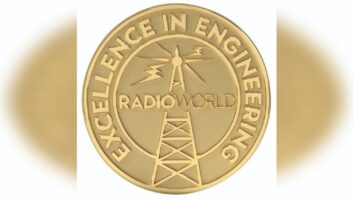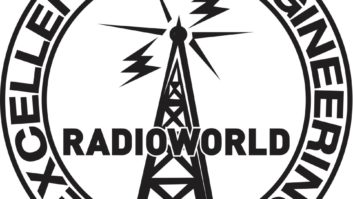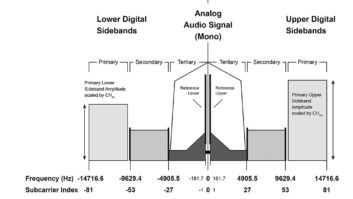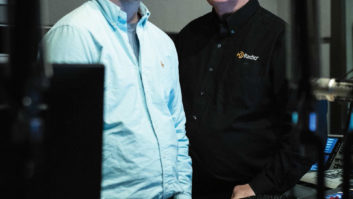Radio World publishes User Reports on products in various equipment classes throughout the year to help potential buyers understand why a colleague made a given equipment choice. These User Reports are unpaid testimonials written by users who have already purchased the gear. Radio World Product Evaluations, by contrast, are freelance articles by a paid reviewer who typically receives a demo loaner.
FARGO, N.D. — The road to digital in the radio broadcast industry is rarely an all-at-once endeavor. More often there is a strategic plan based on gradual upgrades in the studio and at the transmission site.
The studio-to-transmitter link is one area that is discussed less frequently. There is the perception that the STL unit is simply transporting program audio, whether AM/FM analog or digital. This may be technically true, but the STL unit has come a long way in 20 years, the time that has elapsed since Go Radio last installed a new STL for two of its stations.

Mark Borchert is satisfied with the Harris HD Link. Photo by Chris Serani STL upgrade
Go Radio Broadcasting owns six stations in the Fargo market. The company recently decided to upgrade its STL system for country station KVOX(FM) and active rock station KQWB(FM).
The goal was to find a more feature-rich digital STL unit to replace a 20-year-old system. Doug Tharp from equipment dealer SCMS suggested an evaluation of the new Harris Intraplex HD Link system and provided initial insight on the feature set.
The decision to purchase the HD Link came quickly. Go Radio is in the process of moving to digital uncompressed audio throughout the air chain. The process began with re-ingesting existing music, commercials and promos into a central OMT iMediaTouch automation system. The HD Link has plenty of bandwidth and power to transport uncompressed audio over long distances. It’s also designed to support HD Radio alongside FM, providing a future-proof installation.
The HD Link is a 950 MHz fixed microwave STL, which means Go Radio could continue to take advantage of its STL license at a time when few new frequencies exist. The HD Link replaced a system that had served both stations well but lacked some of the modern and forward-looking features that KVOX and KQWB require.
The transmitting unit at the studio feeds HD Link receivers at two locations: the KVOX transmitter is three miles from the studio; at 11 miles away, the KQWB hop is nearly four times the distance. The HD Link, with its built-in 5 W digital power amplifier, operates over the same clear sightlines our previous unit used to ensure the signal can reach both sites and withstand noise along the way, while a built-in circulator on the transmitter ensures safe operation.
Setup was simple. The clarity of the sightlines meant that the dishes, coax and related components remained in their configurations. Both stations were on the air in a matter of hours. Downtime was limited and mainly related to travel between two transmitter sites.
The uncompressed digital audio was the biggest immediate benefit for both stations. The sampling rate was set to 44.1 kHz (other choices were 32 and 48 kHz) to provide excellent audio quality. Front-panel headphone jacks on the receiving units allow the engineering staff to monitor and enjoy the noticeably enhanced audio fidelity. The difference in audio quality compared to our old unit is eye-opening.
The HD Link offers several monitoring options. The units are monitored almost exclusively from the front panel. This allows the staff to track signal levels and notice changes over time that may affect on-air quality.
Go Radio has taken advantage of the front-panel monitoring to troubleshoot interference. Interfering signals recently entered the licensed spectrum for both stations, which was partially determined from signal level fluctuations on the HD Link front panel. The engineering staff connected inline band-pass filters from the antennae to the HD Link receivers to filter out the intruding noise.
The system can also be monitored via IP connections, and each HD Link unit has a unique security-equipped Web address for engineers to pull up using a browser. Here, engineers can view the configuration of the unit and make necessary adjustments to various settings.
It is also possible to monitor the health and operation of the unit from this Web address. In the future, Go Radio expects to take better advantage of the IP connections for simultaneous off-site monitoring of all three units.
Another feature of the HD Link is the inclusion of two 7 kHz auxiliary audio channels as standard. Go Radio is transmitting four channels of main program audio (two stereo pair) and RDS data for both stations. The stations plan to use the auxiliary audio channels to transport program audio for an AM station that is using equalized phone lines for part of the journey.
The phone lines transport the audio to an older studio, where the signal jumps to an STL unit for delivery to the AM transmitter. The HD Link would instead carry that audio to one of the FM sites, where the AM signal would then break off for last-mile transport.
The HD Link is the most recent part of Go Radio’s audio chain to go digital. Along with other HD-ready products Go Radio has installed (including Harris digital transmitters), the HD Link provides a clear upgrade path to HD Radio. There are no plans to move beyond analog AM and FM at this point, but having the right components in place will help if and when the time comes.
Mark Borchert is a chief engineer with Go Radio Broadcasting.
For information, contact Scott Grueninger at Harris Broadcast in Ohio at (513) 459-3400 or visit www.harris.com.












